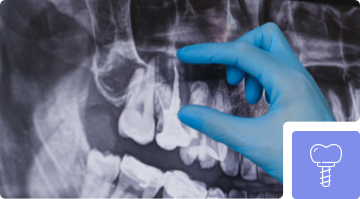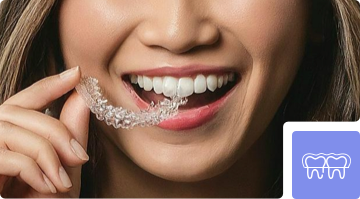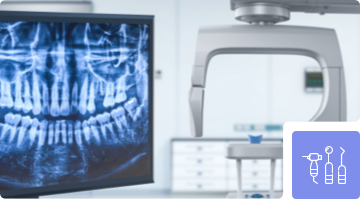Yes, braces can correct jaw alignment. While many people associate braces with straightening teeth for aesthetic reasons, braces can be equally effective in addressing misaligned jaws.
Jaw misalignment is a common issue that can lead to challenges like difficulty chewing, speaking, chronic jaw pain, and even breathing problems in severe cases.
Braces offer a functional solution to such problems by aligning not only your teeth but also guiding your upper and lower jaws into position. Fortunately, with proper orthodontic care, you can improve your smile’s appearance and its functionality!
What Is Jaw Misalignment?
Jaw misalignment, or malocclusion, is when your upper and lower jaws don’t align properly. This can manifest in several ways:
- Overbite: When the upper jaw significantly overlaps the lower jaw.
- Underbite: When the lower jaw juts out, causing an extended appearance.
- Crossbite: When some upper teeth sit behind the lower teeth.
- Open Bite: When the front teeth don’t meet, leaving a gap even when the jaws are closed.
Left untreated, jaw misalignment can lead to:
- Difficulty chewing or biting
- Persistent jaw pain or discomfort
- Speech challenges, like lisping or difficulty pronouncing words
- Excess wear on certain teeth, leading to damage or decay
- Sleep disturbances, including sleep apnea, in severe cases
Aligning your jaw cannot only improve its function, but can also improve your overall quality of life.
How Do Braces Work to Align the Jaw?
Correcting jaw alignment with braces involves applying constant, gentle pressure to move teeth and, in turn, guide the upper and lower jaws into the proper position. Here’s an overview of the process:
- Brackets are adhered to the surface of your teeth.
- Wires connect these brackets, creating a continuous force that guides teeth and jaws over time.
- Adjustments are made periodically by your orthodontist to ensure steady progress.
The duration of treatment depends on the severity of the misalignment and can range from several months to a few years. While braces are best known for straightening teeth, they’re capable of restructuring your bite.

Types of Braces for Jaw Realignment?
Not all braces are created equal, and the type of braces you’ll need will depend on the complexity of your jaw misalignment as well as your aesthetic preferences. Here’s a breakdown:
Metal Braces
Traditional metal braces are the most common and effective solution for severe jaw alignment issues. Made from high-grade stainless steel, they allow for precise adjustments and are often used for cases requiring significant correction.
Ceramic Braces
Ceramic braces function similarly to metal braces, but are made from clear or tooth-colored material, making them a more discreet option. While effective for mild to moderate jaw alignment issues, ceramic braces require extra care, as they’re more fragile.
Clear Aligners
Clear aligners, such as Invisalign, offer a nearly invisible alternative to traditional braces. They’re often used for mild to moderate jaw realignment, and they’re also removable, allowing for easier cleaning and maintenance. However, they may not be ideal for severe misalignments.
Your orthodontist will recommend an option based on your specific needs. At Rundle Dental, we offer tailored orthodontic solutions to help you achieve a healthier, properly aligned smile.
Maintaining Jaw Alignment After Braces
Once your braces are removed, you’ll want to maintain your newly aligned jaw. Without proper aftercare, your teeth and jaws may gradually revert to their original positions. Here are some tips to help:
Consistently Wear Retainers
Retainers are custom-made devices designed to hold your teeth and jaws in their new positions. Orthodontists often recommend wearing retainers full-time initially, then transitioning to night time wear as progress stabilizes.
Maintain Good Oral Health
Keeping your teeth healthy is essential to maintaining proper alignment. Brush at least twice daily, floss regularly, and consider using a fluoride mouthwash for additional protection.
Avoid Harmful Habits
Certain habits can put strain on your jaw and teeth, potentially undoing your orthodontic work. Avoid:
- Nail-biting.
- Teeth grinding or clenching.
- Chewing on ice or non-food objects.
Use Mouthguards for Sports
If you play contact sports, invest in a high-quality mouthguard to protect your teeth and jaw from impact injuries.
Lifestyle Tips to Support Jaw Alignment
Beyond orthodontic care, your daily habits and posture can impact your jaw alignment. Here are some tips to help:
- Eat a Balanced Diet: Foods rich in calcium and vitamin D strengthen your teeth and jawbone.
- Manage Stress Levels: Stress can lead to clenching or grinding your teeth, which may negatively affect your jaw alignment. Incorporate relaxation techniques like yoga or meditation to help reduce tension in your jaw and facial muscles.
- Schedule Regular Check-Ups: Routine visits to your orthodontist or dentist can catch any potential issues early and help maintain alignment.
Why Choose Rundle Dental for Jaw Alignment Care
At Rundle Dental, we believe every patient deserves a smile that works as well as it looks. Our experienced orthodontic team is dedicated to providing personalized treatment plans that address a variety of orthodontic needs, including complex jaw misalignments.
Don’t wait to start your smile transformation. Schedule a consultation with Rundle Dental today and take the first step toward a healthier, more confident smile.










